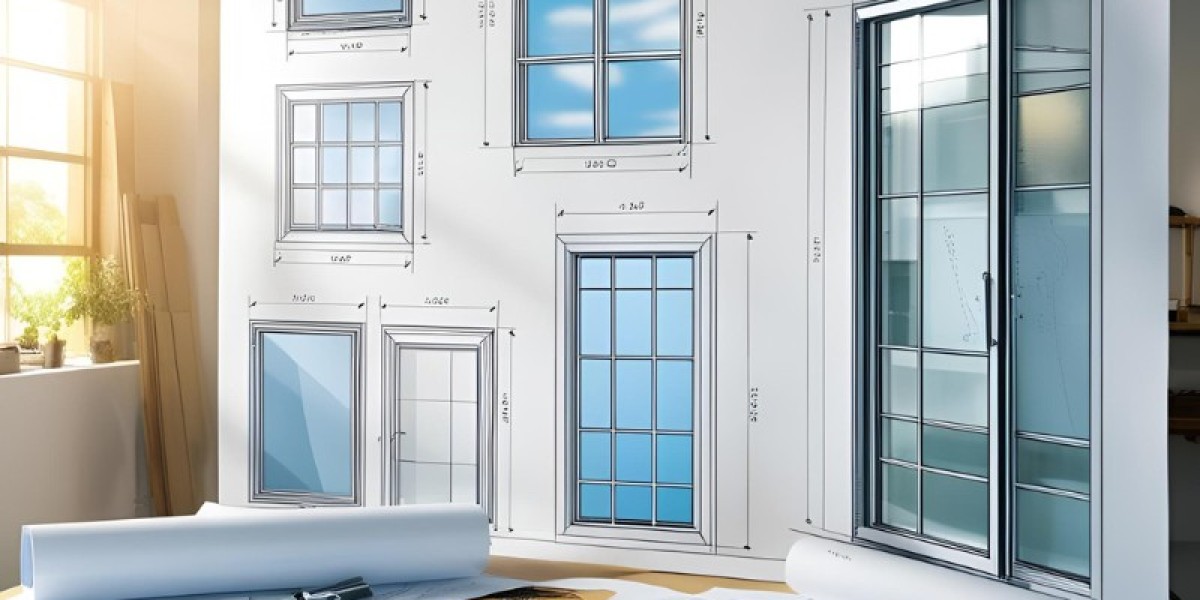Glazing shop drawings play a crucial role in the successful execution of curtain wall and storefront systems. These detailed technical drawings act as a bridge between architectural intent and fabrication, ensuring that glass panels, framing systems, and structural supports align perfectly with design and performance requirements.
Whether for commercial skyscrapers or retail storefronts, precise glazing shop drawings help streamline installation, improve material efficiency, and prevent costly errors. ‘
This article explores the significance of glazing shop drawings in curtain wall and storefront design, highlighting their impact on accuracy, compliance, and project coordination.
What are Glazing Shop Drawings?
Glazing shop drawings are detailed technical drawings that show how glass and glazing systems will be installed in a building. These drawings include measurements, materials, and installation details, helping contractors and fabricators understand the project’s requirements before construction begins.
Unlike architectural drawings, which provide a general design, glazing shop drawings focus on the specific glass components, such as windows, curtain walls, storefronts, and glass partitions. They show precise dimensions, connection details, glass thickness, framing, and hardware. These details ensure that everything fits correctly and meets safety and building code standards.
Glazing shop drawings are created by drafters, engineers, or glazing contractors using CAD software. They act as a bridge between the architect’s vision and the manufacturer’s production process. By providing clear instructions, these drawings help reduce errors, minimize material waste, and improve efficiency during installation.
One of the key benefits of glazing shop drawings is that they allow architects, builders, and clients to review and approve the design before fabrication starts. This helps avoid costly changes later in the project. Additionally, these drawings ensure that the glazing system integrates seamlessly with other building elements.
Role of Glazing Shop Drawings in Curtain Wall Design
Glazing shop drawings play a vital role in curtain wall design, ensuring accuracy, efficiency, and smooth execution during construction. These drawings provide a detailed visual representation of the curtain wall system, including glass panels, aluminum frames, anchors, and other structural components.
One of the key benefits of glazing shop drawings is precision. They help architects, engineers, and fabricators understand how different parts fit together, minimizing errors and material wastage. With accurate measurements and specifications, contractors can avoid costly mistakes and rework.
Another important role of glazing shop drawings is coordination. Curtain wall systems must integrate with the building’s structure, mechanical systems, and surrounding elements. These drawings allow different teams to collaborate, ensuring that the design aligns with project requirements and site conditions.
Glazing shop drawings also aid in compliance with safety and building codes. They include details about glass thickness, framing systems, and load-bearing capacities, helping to meet industry standards and local regulations.
Role of Glazing Shop Drawings in Storefront Design
Glazing shop drawings play a key role in designing storefronts by ensuring accurate planning and installation of glass and framing systems. These drawings provide detailed instructions for fabricators, installers, and contractors, helping them understand how each component fits together.
One of the main benefits of glazing shop drawings is precision. They include exact dimensions, material specifications, and connection details, reducing errors during construction. With accurate drawings, glass panels and frames are manufactured to the right size, avoiding costly rework and delays.
Shop drawings also improve coordination between different teams working on a project. Architects, engineers, and contractors can review and approve these drawings before fabrication begins, ensuring everything aligns with the design vision and building requirements. This process helps prevent miscommunication and unexpected issues on-site.
Another advantage is compliance with safety and building codes. Storefronts must meet structural and energy efficiency standards, and glazing shop drawings ensure that materials like tempered or insulated glass are used correctly.
Benefits of Using Detailed Glazing Shop Drawings
Glazing shop drawings are essential in construction projects involving glass installations, such as windows, doors, facades, and partitions. These drawings provide precise details about the glass components, helping ensure smooth installation and high-quality results. Here are some key benefits of using detailed glazing shop drawings:
- Accuracy in Design and Installation
Detailed shop drawings eliminate guesswork by providing exact measurements, material specifications, and attachment details. This ensures the glass fits perfectly, reducing errors during installation. - Improved Communication
These drawings serve as a bridge between architects, engineers, fabricators, and installers. They help everyone involved understand the design clearly, reducing misunderstandings and delays. - Cost and Time Savings
With precise shop drawings, errors are minimized, leading to fewer material wastages and reworks. This saves both time and money by preventing costly mistakes and delays. - Compliance with Building Codes
Glazing systems must meet safety standards and regulations. Shop drawings ensure compliance by including all necessary structural and safety details, avoiding legal and safety issues later. - Better Project Coordination
Glazing is often integrated with other building elements like metal frames and curtain walls. Detailed drawings help in coordinating with different trades, ensuring a smooth workflow. - Enhanced Quality Control
By following detailed shop drawings, manufacturers can produce high-quality glass components that meet the required specifications, leading to a better final product.
Using detailed glazing shop drawings is a smart approach to achieving efficiency, safety, and precision in any glass installation project.
The End Note
Glazing shop drawings are an essential component of curtain wall and storefront design, serving as a critical link between architectural vision and practical execution. These detailed drawings ensure precision in fabrication and installation, minimizing costly errors and material waste. By facilitating effective communication and coordination among architects, engineers, fabricators, and contractors, they streamline the construction process and enhance project efficiency.
Additionally, glazing shop drawings play a vital role in compliance with safety and building codes, ensuring that glass systems meet structural and regulatory standards. Their contribution to both functional and aesthetic aspects of a project makes them indispensable in modern building design.
Ultimately, investing in detailed glazing shop drawings leads to improved accuracy, cost savings, and high-quality results, making them a fundamental tool for successful curtain wall and storefront installations.



